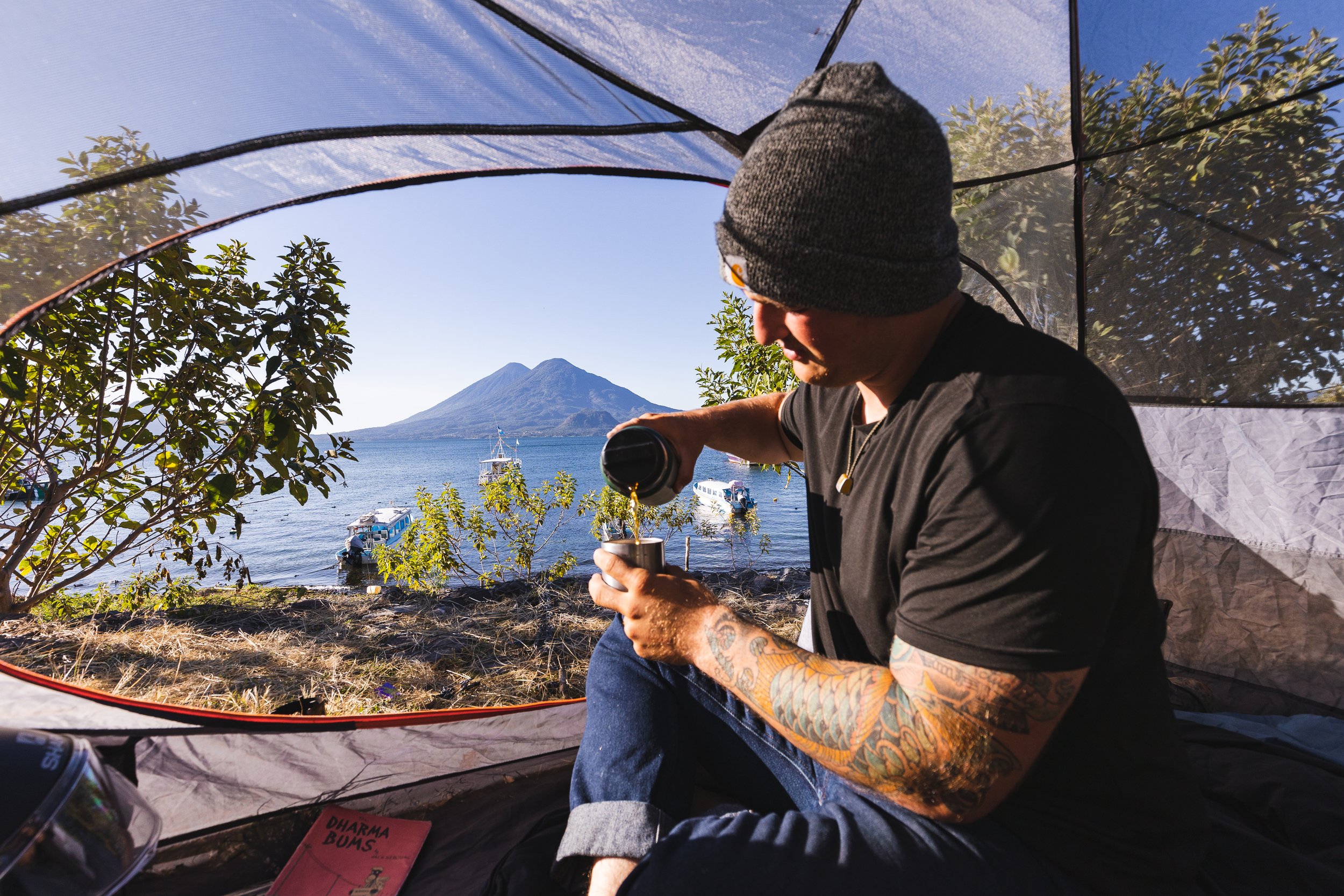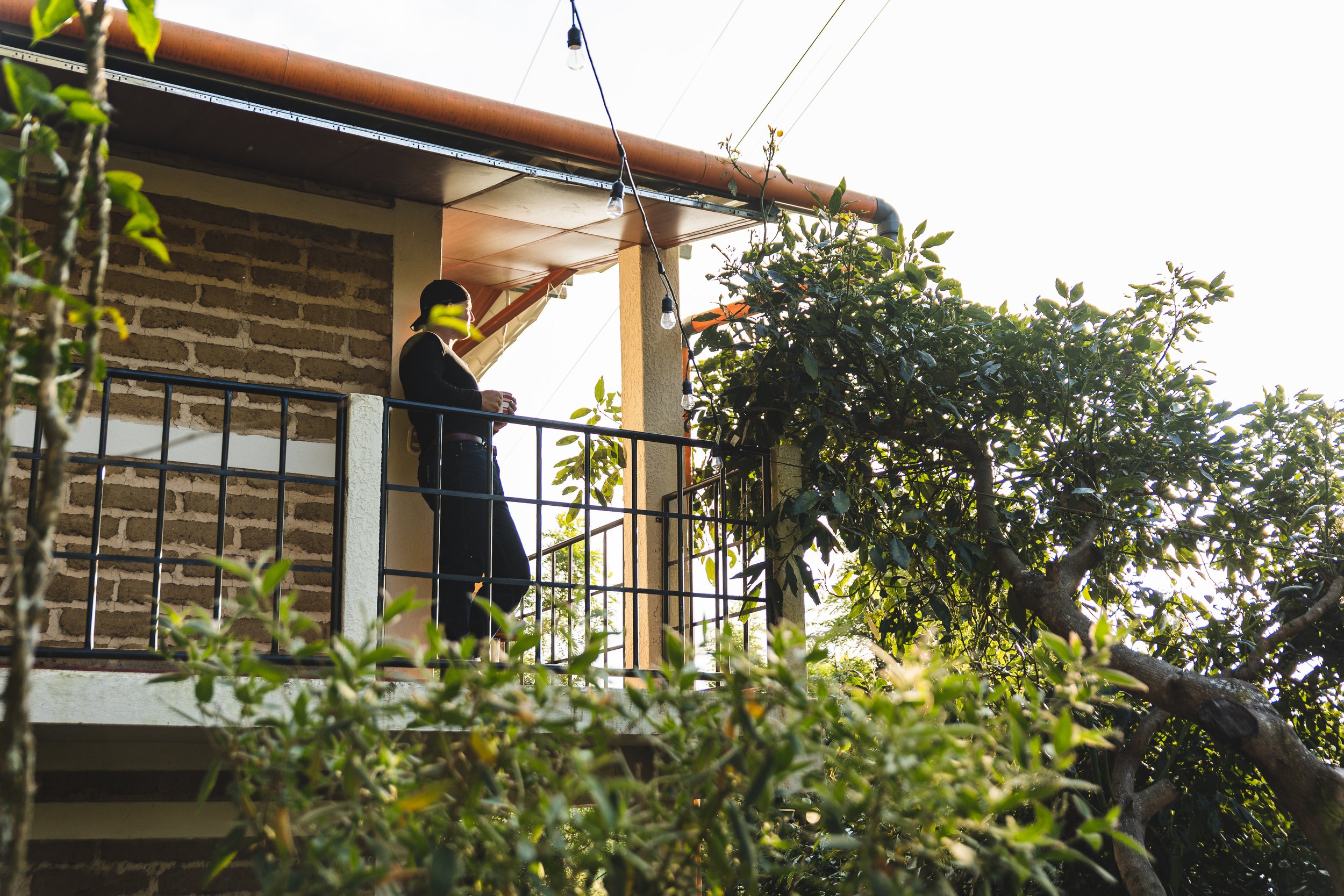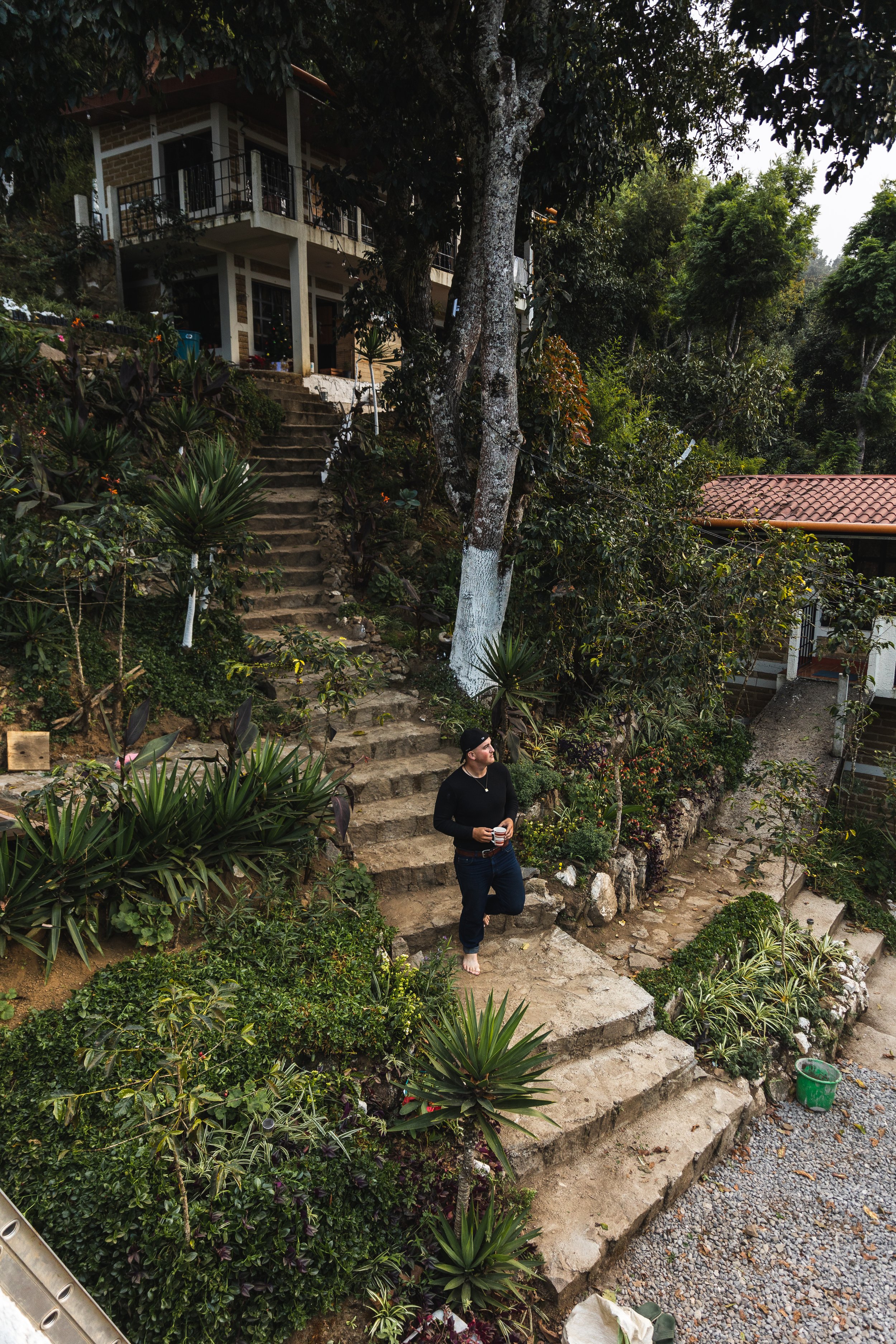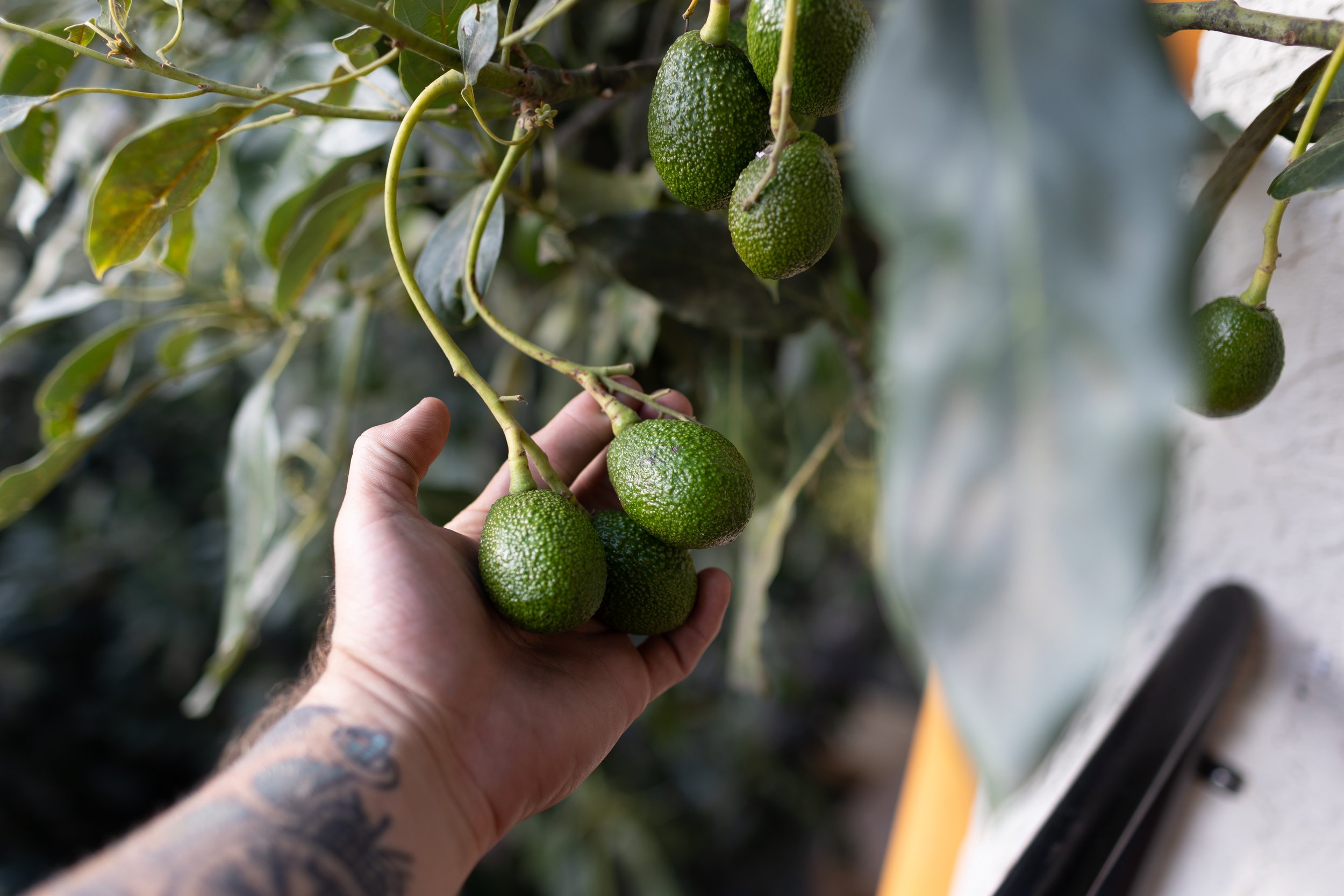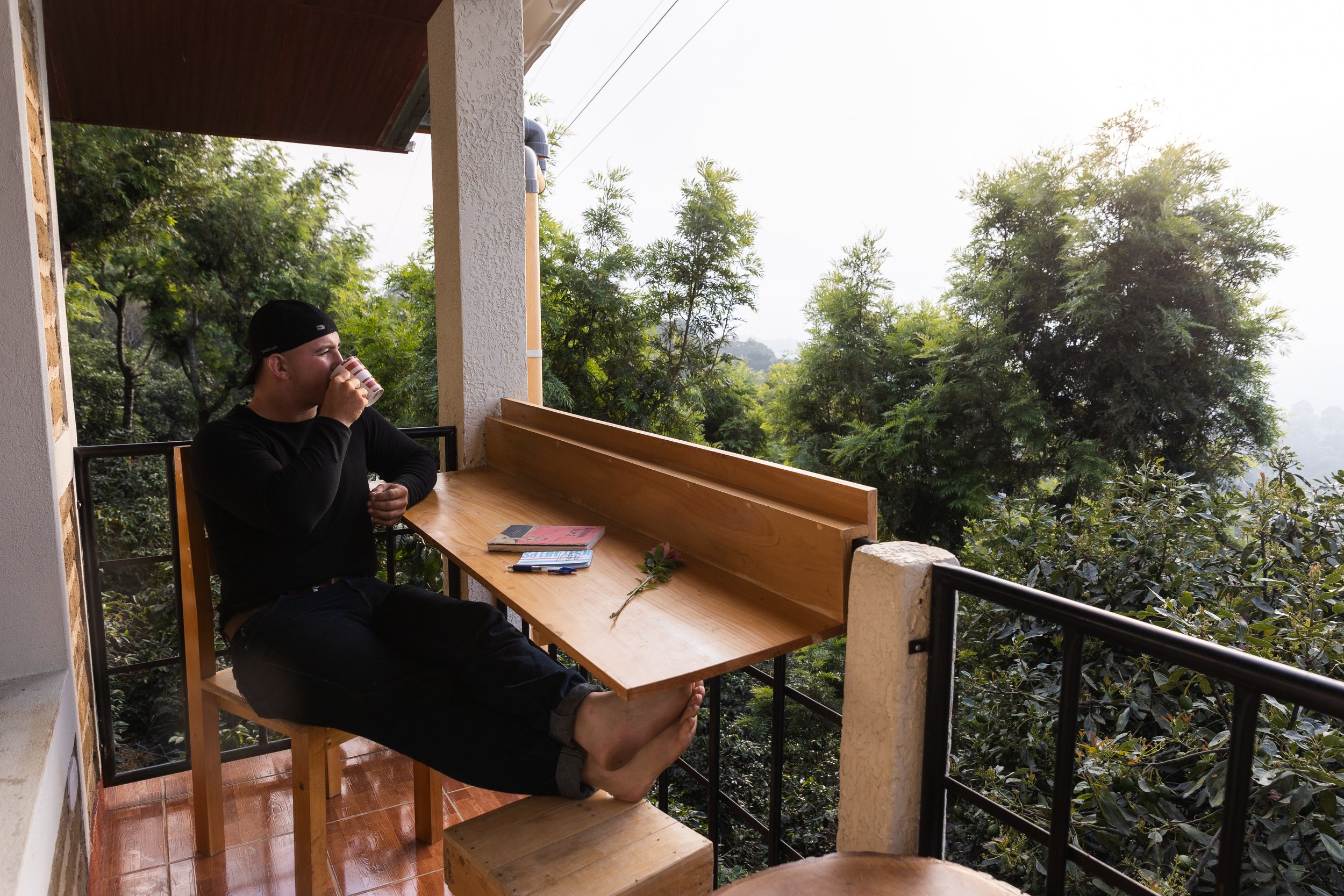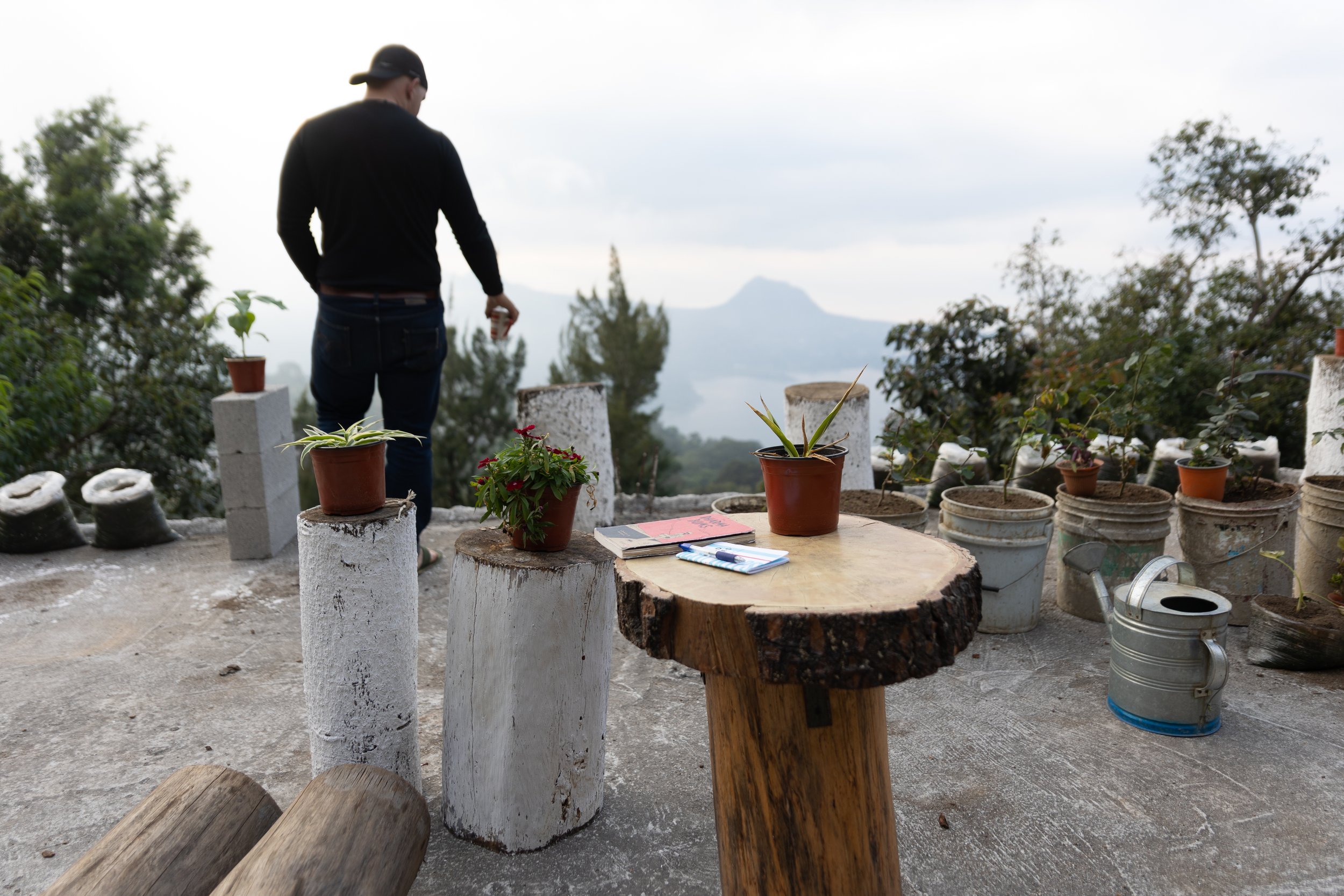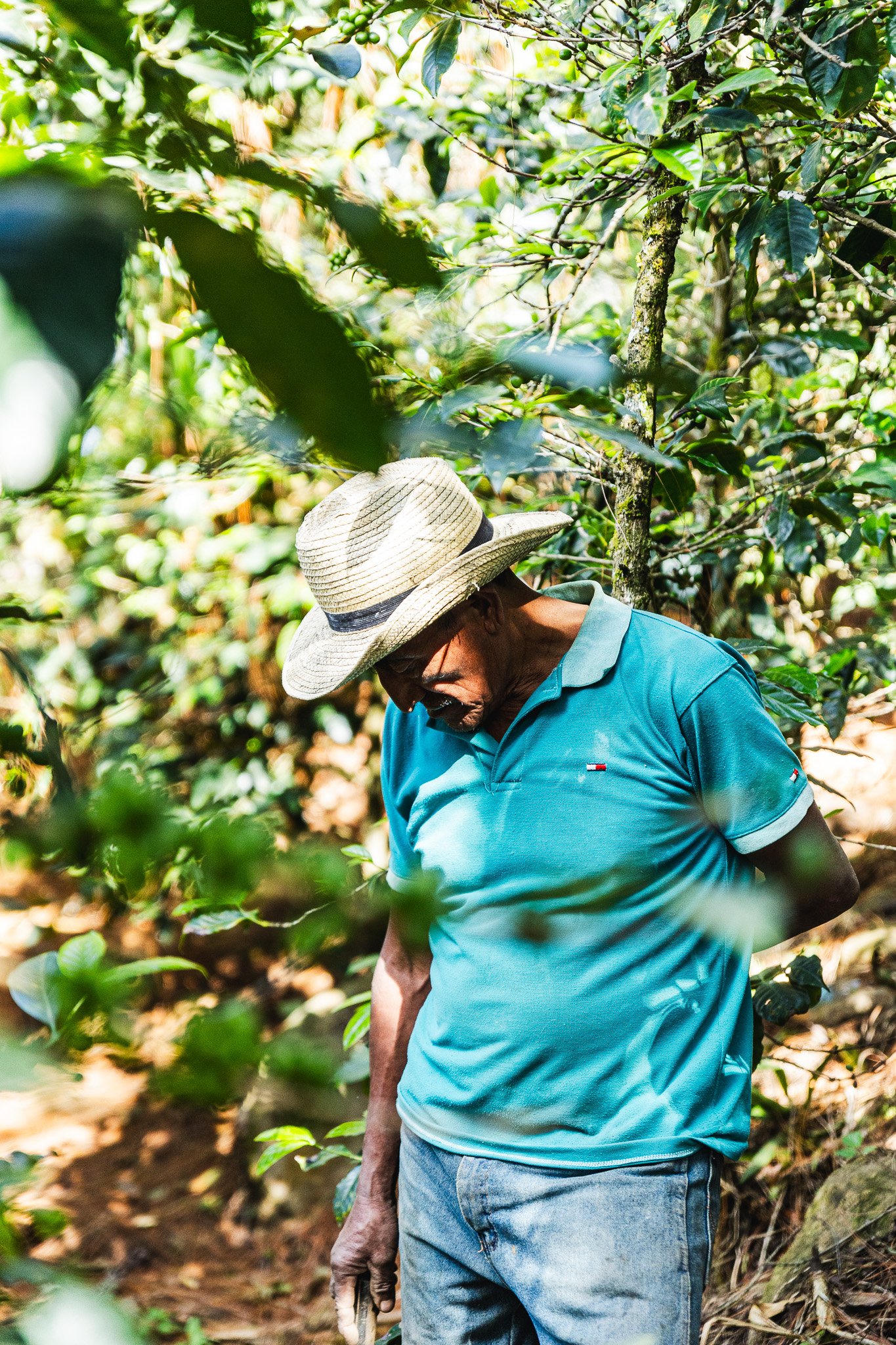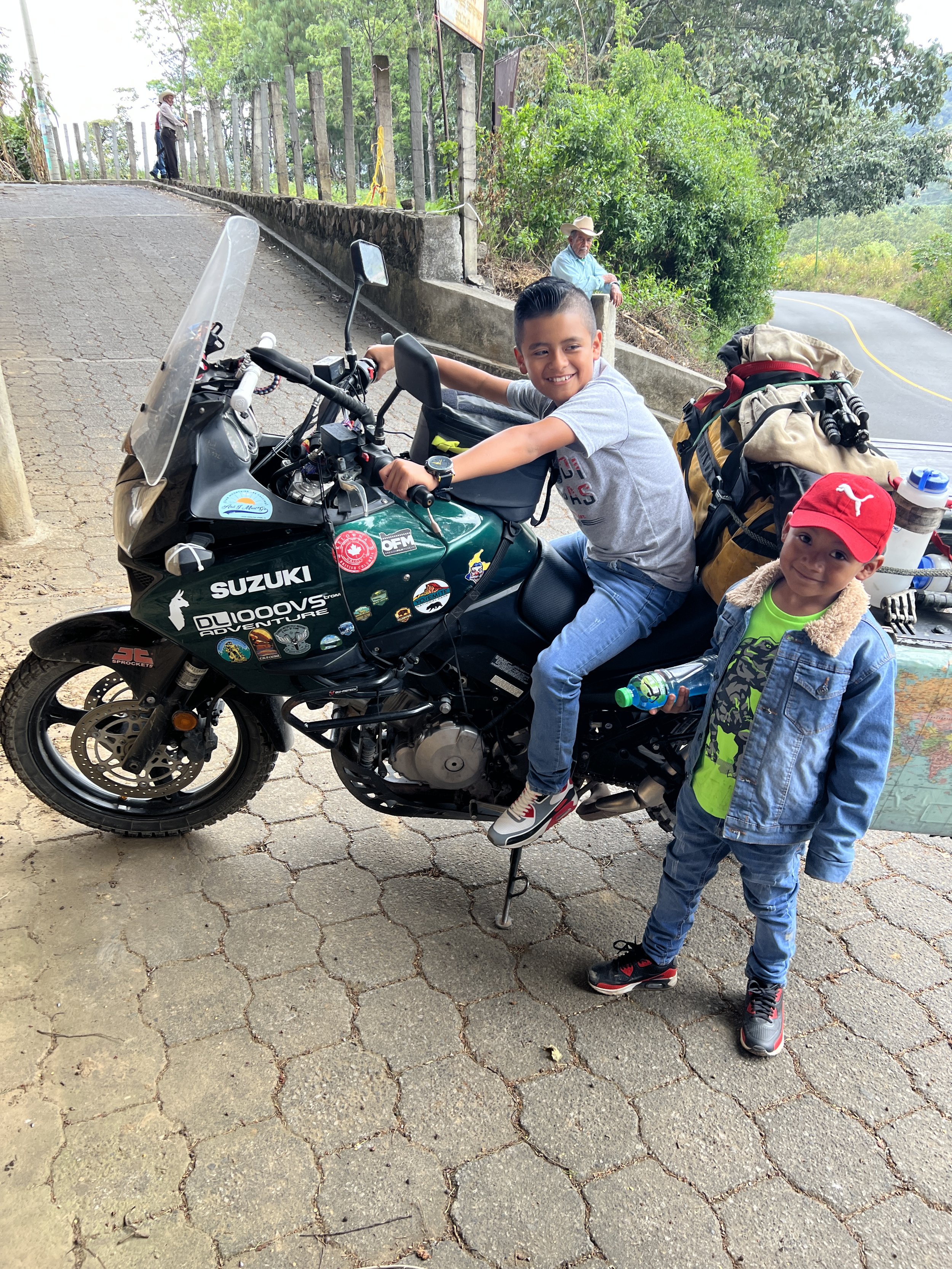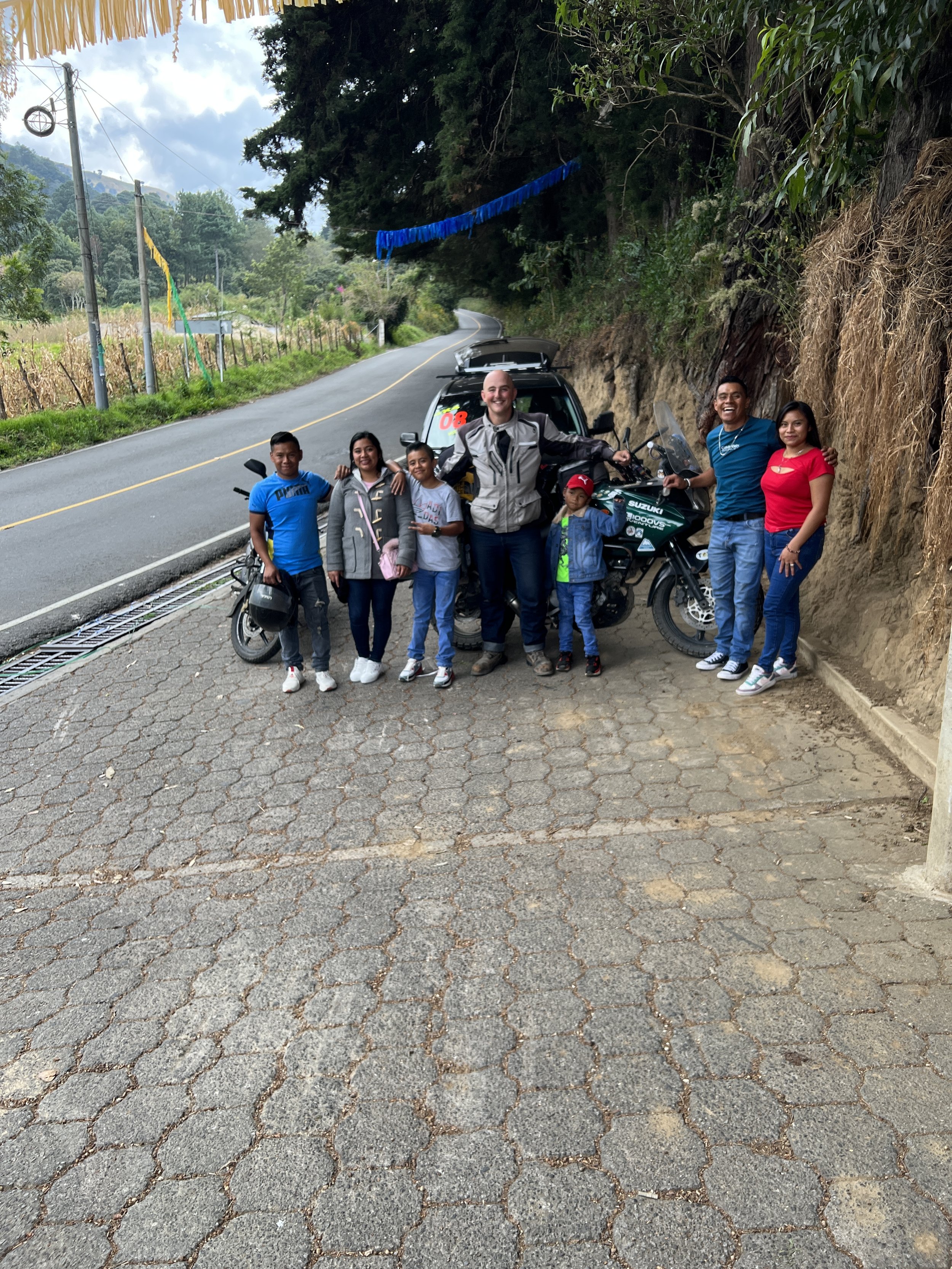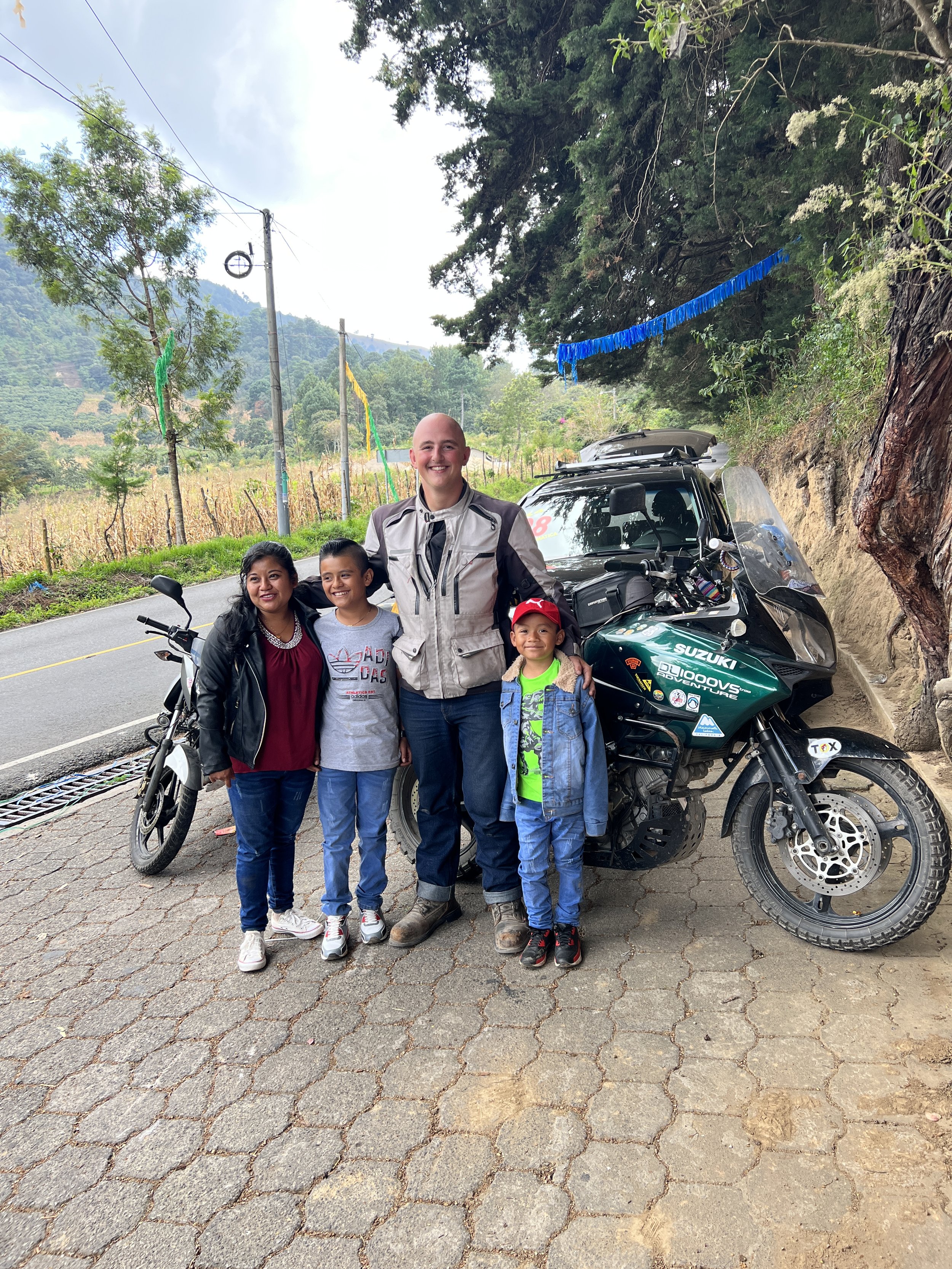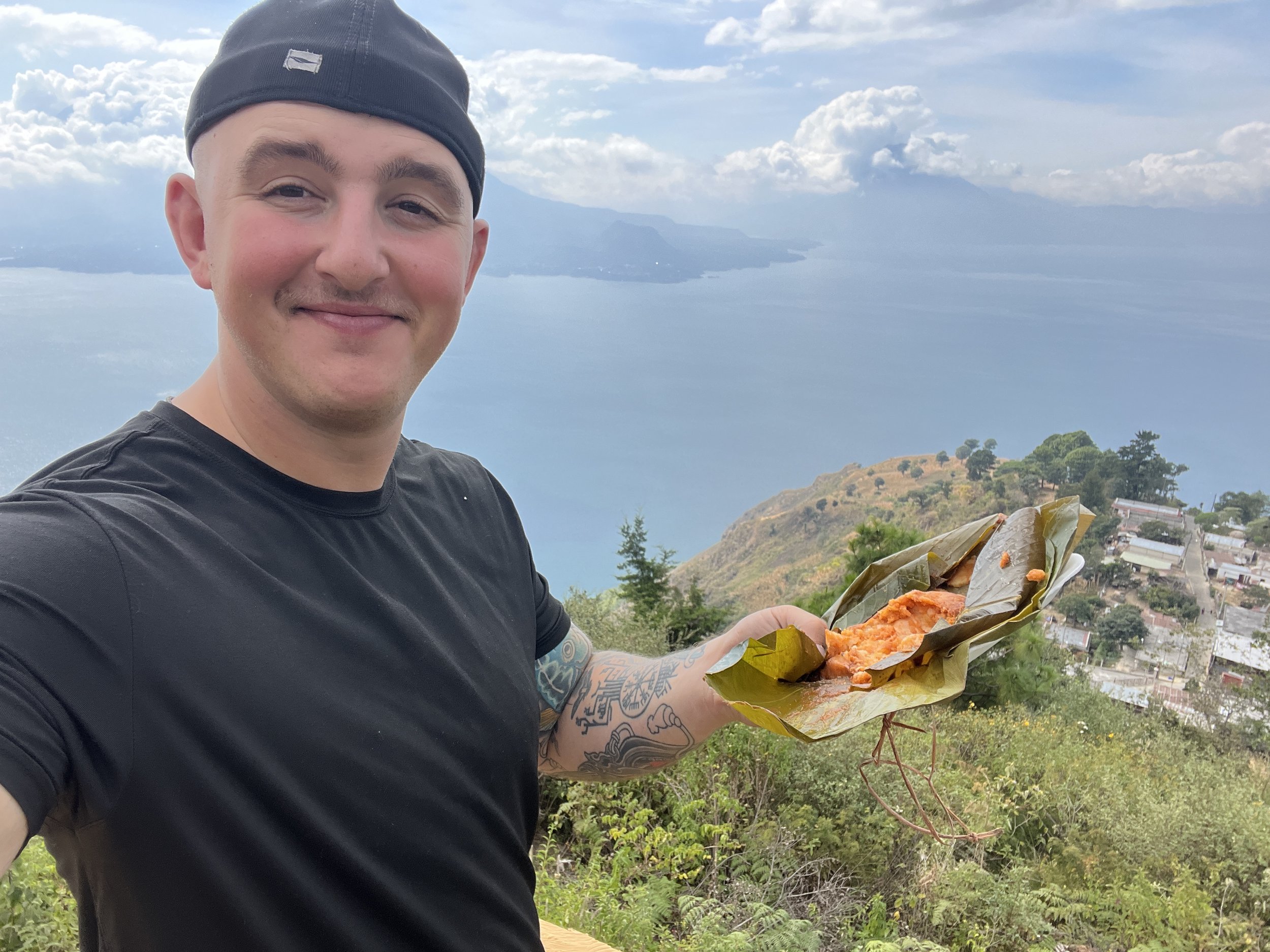New Year on the Road
I turned over in the dark, crowded dorm room and blindly felt for my phone. Squinting at the screen, it read “January 1st, 2023”. Noise filtered in from the busy streets of Panajachel, Guatemala - the familiar noises of street vendors and tourists venturing out for their morning coffee. I’d spent the last week and a half enjoying the scenery, the culture, and the people. “Pana” is one of those rare places where everyone shares the same story:
“Yeah, I showed up five years ago and basically never left.”
My first morning on the lake - talk about a great view to wake up to!
My first night was spent on the shore of Lake Atitlan, sleeping peacefully in my tent while Volcanos San Pedro and Atitlan lay watch over the landscape. While leaving a grocery store the next morning, I met Jaime - a local hotel owner and English tutor.
“I love helping travelers and people who are chasing their dreams.” He told me. “If you would like, you can be my guest at the hotel for free.”
I spent four calm, beautiful days at Rancho Fortaleza. In the mornings, I’d drink coffee harvested ten feet from the kitchen in which it was brewed and eat guacamole made from avocados felled from a monstrous tree on the property. Jaime walked me around the estate tucked high in the hills above a land born in fire. Panajachel sat quietly in the distance, as did San Lucas and San Marcos.
I welcomed the new year with Greg, a friend I’d made in Chiapas who was also riding down to Ushuaia - we’d been bumping into each other since Mexico. His father had flown down to visit, and the three of us smoked cigars and sipped sweet, burning Buffalo Trace as fireworks lit the night sky.
I packed up the hostel in a hurry and walked back to the bike. It sparked to life, and I waved goodbye to Marvin, the parking lot owner who watched my bike the night before. The road out of Panajachel meandered up and over the mountain, carrying me back to the main road. Stray dogs darted out at me as we passed, something typical of Central America which I learned to tolerate the best I could. Rounding a curve, I saw a family of eight stopped on the side of the road; the trunk of the car was open, and a motorcycle lay in pieces behind them. I decided to turn back - language barrier or not - and help them.
Heads turned to me as I dismounted and approached. Three of the men were huddled around an inner tube as one of them, a skinny man with trimmed black hair and a gold chain around his neck, fiddled with the valve stem; I assumed he was the older brother of the three.
“Estan bien?” I asked.
Always fun popping a tire. TWO tires, on the other hand…
He looked up and laughed, “No, no estamos bien!” We shook hands.
“Como te llamas?” What’s your name?
“Samuel, y tu?” Samuel, and you?
“Mike. Que tal? Que es la problema?”
From what I could gather, they’d been riding two-up on the 150cc motorbike when not one, but both inner tubes blew after hitting a pothole. Short on tools, they’d been stopped on the side of the road for over an hour trying to fix both tubes. The rear was an easy patch, but the front had a bent valve stem - Samuel had been trying for 45 minutes to bend the stem straight so the tube would keep air.
It seemed so simple in my head - just patch it and get moving - but then I remembered that I had to carry all the tools I could. I wasn’t 30 minutes from home and a tool kit and a garage. I offered them the use of my tire repair kit; his eyes lit up as I produced the shiny, new valve stem along with a removal tool. While Samuel and his brothers made quick work of the reinstallation, his mother reached into a cooler and produced two parcels wrapped in banana leaves.
“Quieres comida?” She asked. Would you like food?
She held the parcels in outstretched hands, and I tried to politely decline; two friends had just gotten food poisoning from the lake water, and I was weary of the local street food. And yet she was persistent enough to push past this, and on the side of the road in Guatemala I enjoyed some of the best chicken and potato tamales of my life. The children walked around the car and circled my bike from a distance. They were shy, sneaking glances at me, then at the motorcycle.
I looked to the mother:
“Quieren sentarse en la moto?” Do they want to sit on the motorcycle?
“Si!” She replied, and looked to the older of the two boys. “Adelante, mijo!”
He climbed onto the bike while I stood to the side, making sure he didn’t fall off or knock the bike over. A massive grin drew across his face as he leaned into the handlebars. I stepped in to turn the engine over, and he rolled on the throttle. Samuel came from around the car and laughed. He extended his hand,
“Muchas gracias amigo.”
“Por nada.” I said.
I repacked the tire kit and my tool roll as the family collected their things. Before leaving, the mother came over and asked to take a photo with me. She stood next to me and looked up:
“El es mas alto!” He’s much taller!
We all shared a laugh, and they thanked me again as I kicked a leg over the bike. Watching in the side view mirror as they disappeared from view, I laughed as I imagined those photos ending up in a family photo album. “Este es el gringo que paró y nos ayudó!” They’d say.
For the next hour, I rode on through the mountains. The roads were rough - riddled with potholes that locals spent time filling day by day. In Cocales, the GPS wanted me to go left on the main road to Siquinalá, then down to El Paredon, the small surf town on the beach where I’d planned to meet my friends Nicole, Savannah, and Dylan. But looking at the map, I saw a smaller road along the coast that looked like it would take me to Sipicate. I knew I could catch a ferry to El Pardon in Sipicate, so I asked a local sitting at the intersection,
“Amigo: estoy pasando a Sipicate. Hay un camino de Tecomate a Sipicate?”
The local, a shoeless, rugged-looking homeless man glanced at me. He sipped his beer, swallowed, and wiped his chin.
“Si, hay un camino en Tacomate.”
A short answer, but all I needed. I thanked him and continued on straight. The road ahead was pin-straight, encapsulated above and on the sides by massive palm trees. In the tropical climate, I felt like I’d been there before; not in the deja-vu sense that had popped up again and again in Mexico and Belize, but like I’d been somewhere that had the same exact scenery. An image flashed in my mind of a spring-break road trip during my sophomore year in College, crammed in the back seat of Paul’s Toyota Camry as we approached Tybee Island, Georgia. I’d driven us from the eastern end of Long Island down to the South Carolina/Georgia border on a 17-hour stretch. That was one of my first big road trips, and in a way led me to exactly where I was at that moment in Guatemala.
I stopped for gas and struck up a conversation with the attendants. They circled the bike and asked the typical questions; in response, I gave them the typical answers. I told them I was headed to Tecojate and onto Sipicate. One of them looked at me with concern.
“Caballero, No hay un camino en Tecomate. Necesitas regresar a Cocales.” He told me I needed to return to the main road where I’d spoken with the homeless local. I showed him the map and asked if there was a way I could go locally. He thought for a moment and explained to me that I could go back a few hundred meters, turn right, and continue on the dirt local roads. I caught a brief mention of a “Puente”, a bridge I’d need to cross over the river. After the bridge, I’d drop into Cerro Colorado, then ride on to Sipacate. The entire explanation seemed clear enough, so I turned out of the lot, waved to the attendants, and rode on my way.
The dirt road meandered through the corn and sugarcane fields, and the local farmers stared as I passed. After 30 minutes, I crossed a small bridge and thought to myself,
“Awesome - that must be the bridge he was talking about.”
I continued straight, bouncing in my seat to the music coming through my intercom. Two cars passed me going back towards the main road, and concern filled the faces of both drivers. Before I had time to process it, I crested over a berm in the dirt road. I stopped in place, and out loud, to no one in particular, said the first thing that came to mind:
“Get the f**k out of here.”
The road ended at a massive river. Running across it was a small bridge that stretched nearly 600 feet across, sitting five feet above the Rio Coyolate. It looked impossibly small, just a few feet wide, and had no guard rails. From above, it looked impassable - I couldn’t imagine it was possible for vehicles to cross.
“That has to be a footbridge…” I thought.
Surveying the scene. The bridge was maybe a meter wide, complete with rickety boards.
I coasted down the berm and spoke with a man sitting in a hut near the bridge. Meanwhile, unbothered children and mothers splashed in the water close by. I asked him if vehicles could pass.
“Si - hay una propina de 10 pesos.” There was a toll to cross the bridge, but I could cross. “Can it hold my weight?” Tengo mucho peso aqui. Puedo pasar en el puente?
He shrugged. “Si. No habrá una problema.” Yes, there won’t be a problem.
I got off the bike and walked the bridge. The water itself wasn’t deep - maybe two feet at its deepest. In many places, I could see the muddy water carrying sand along the rocky river bottom. Nonetheless, the bridge was no more than four feet wide, and the weathered, wooden boards slanted back and forth; had you turned the bridge vertically it could’ve resembled the pre-orthodontic mouth of the average middle schooler. At one time, they must’ve been uniform and perfect, but decades of being baked in the Guatemalan sun after the rainy season had transformed them into a bumpy, unstable mess.
I knelt down, touching my fingers to the rough boards, and saw the distinct, grey track of residual rubber: a motorcycle trail. I reasoned that motorcycles must cross this monstrosity. As I had that thought, like clockwork, a small motorbike appeared atop a berm on the opposite end of the bridge. Much bolder than I’d been, it descended the hill and I proceeded to watch as it navigated the slanted boards and make it safely to the other side.
Part of living on the road comes down to pushing through less-than-ideal situations; it helps you figure out who you really are and what you’re capable of. As I stood on that footbridge, I thought of Chuck, my host with whom I’d spent three days in Truth or Consequences, New Mexico.
He told me of this of his time in the Yukon Territory:
“Any time I found myself faced with a difficulty on the road, I thought, ‘well, if I make it through this, it’s going to make a really great story.’”
With Chuck’s voice echoing, I decided to go for it. I walked back to the motorcycle, the 600lb. beast in all its glory, and saddled up. I had one chance: a fall into the river from that height meant one thing: the trip was over. Getting it out of the water would’ve required, at minimum, a dozen people, and getting it up and running again would’ve required more money than I could readily spend. The voice in my head spoke up. “So it’s simple: no falls.”
I took a breath, clicked into first, and went for it. I hit the first board at a steady speed. Out of the corner of my eye, I saw the group of locals on the river bank stand up to watch me. My tire bounced as it hit bump after bump, and the boards carried the front wheel into a natural path. I was at the mercy of the bridge, and all I could help to do was slip the clutch, keep a consistent throttle to maintain speed, and yell aloud to an imaginary audience, “This is SPOOKY!”
Approaching the final 20 meters of the bridge, I saw a small motorcycle crest the berm at the far end. I prayed he saw me and wouldn’t continue down the hill - there was no chance of stopping. I decided I’d hit him if I needed to, but thankfully he paused and waited. As I hit the dirt at the bottom of the berm, I rolled on the throttle and proceeded up the hill. I stood on my handlebars, reached a fist to the sky, and let out a road of success.
I’d made it. I’d ridden a 900lb. Motorcycle across a wooden footbridge in the middle of rural Guatemala. It was the first day of 2023, and I was kicking it off with an adventure.
Truly terrifying in all the best ways!

